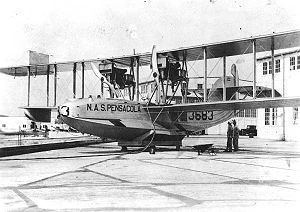Wingspan 32 m First flight 1918 | Length 15 m | |
 | ||
Manufacturers Naval Aircraft Factory, Canadian Aeroplanes, Curtiss Aeroplane and Motor Company | ||
United states navy felixstowe f5l flying boat fly in formation over sea in the un hd stock footage
The twin-engine F5L was one of the Felixstowe F series of flying boats developed by John Cyril Porte at the Seaplane Experimental Station, Felixstowe, England during the First World War for production in America.
Contents
- United states navy felixstowe f5l flying boat fly in formation over sea in the un hd stock footage
- Design and development
- Operational history
- Operators
- Accidents and incidents
- Survivors
- Specifications
- References
A civilian version of the aircraft was known as the Aeromarine 75.
Design and development
Porte had taken the Curtiss H-12, an original design by the American Glenn Curtiss and developed them into a practical series of flying boats at the Felixstowe station. They then took their F.5 model and further redesigned it with better streamlining, a stronger hull using veneer instead of doped linen and U.S.-built 330 hp (later 400 hp) Liberty 12A engines. The prototype was built and tested in England and the design then taken over by the Naval Aircraft Factory, Philadelphia, where further modifications were made to suit their production methods under wartime conditions. The American-built version was also known as the Curtiss F5L and (in civilian operation) as the Aeromarine 75.
The F5L was built by the Naval Aircraft Factory (137), Curtiss (60) and Canadian Aeroplanes Limited (30). Some were converted for civilian use by the Aeromarine Plane and Motor Company in 1919.
Operational history
The F5L entered USN service at the end of the war and was the U.S. Navy’s standard patrol aircraft until 1928, when it was replaced by the PN-12. In civil service, named the Aeromarine 75, the Felixstowe F5L could accommodate 10 passengers and was operated by Aeromarine Airways on flights from Key West to Havana, carrying the first U.S. Post Office international air mail on flights from New York City to Atlantic City, and from Cleveland to Detroit.
Operators
Accidents and incidents
On 13 January 1923, the Aeromarine Airways Aeromarine 75 Columbus suffered engine failure during a flight from Key West to Havana and landed in the Florida Strait. Buffeted by 10-to-15-foot (3-to-4.5-meter) waves, its hull began to fill with water. Four passengers died, but the ferry ship H. M. Flagler saved the other three passengers and both crew members.
Survivors
Both a hull and float from a US Navy F5L are preserved at the National Air and Space Museum (Smithsonian). The hull is only partially skinned with wood to reveal structure. Both artifacts are presently in storage and not available for public display.
Specifications
Data from Smithsonian National Air and Space Museum
General characteristics
Performance
Armament
